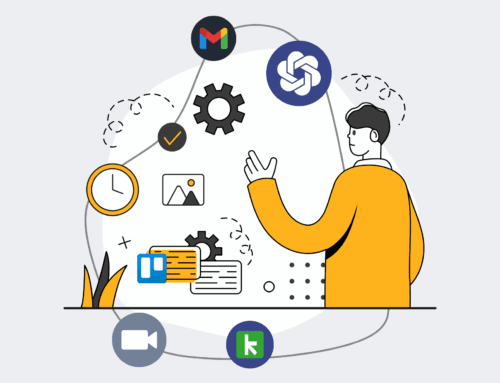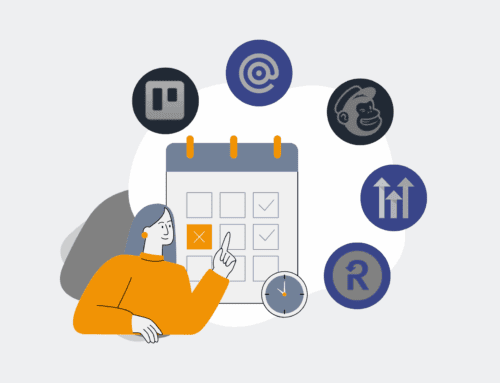6 Ways to Consistently Monitor and Report Your Keap Automation ROI to Stakeholders
In today’s fast-paced business environment, investing in automation tools like Keap is no longer a luxury—it’s a necessity. From streamlining lead nurturing to optimizing client onboarding, Keap automations promise efficiency gains and significant operational improvements. However, the initial investment and the ongoing commitment required mean that stakeholders, from C-suite executives to department heads, will inevitably ask one crucial question: “What’s our return on investment?”
The challenge isn’t just *achieving* ROI; it’s consistently *monitoring* and *reporting* it in a clear, compelling way that resonates with those who hold the purse strings. Without a structured approach to demonstrating the value of your Keap automations, these powerful tools risk being seen as mere expenses rather than strategic assets. Many organizations invest heavily in automation but fall short in articulating its tangible impact, leading to skepticism and missed opportunities for further strategic investment. This often stems from a lack of clarity on what to measure, how to track it, and how to present the data in a way that truly tells a story of success and efficiency. At 4Spot Consulting, we understand that proving the value of your Keap investment is paramount, not just for justifying costs but for driving continuous improvement and securing buy-in for future innovation. Let’s explore six actionable strategies to ensure your Keap automation ROI is not just realized, but also clearly communicated.
1. Define Clear, Measurable KPIs Aligned with Business Objectives
The foundation of effective ROI monitoring lies in identifying the right Key Performance Indicators (KPIs) before you even launch your automations. These KPIs must be directly linked to your broader business objectives and the specific goals your Keap automations are designed to achieve. For instance, if your automation aims to reduce the time spent on manual client follow-ups, a relevant KPI might be “average time to first client engagement” or “number of follow-up tasks automated per week.” If it’s about improving lead conversion, then “lead-to-opportunity conversion rate” or “speed of lead qualification” become critical. Avoid vague metrics; instead, focus on quantifiable outcomes that can be easily tracked and attributed to your Keap initiatives. This requires a collaborative effort with stakeholders to ensure everyone agrees on what success looks like from the outset. Consider both hard metrics, such as cost savings from reduced manual labor, and softer metrics, like improved customer satisfaction or employee morale, which can be quantified through surveys or reduced churn rates.
For HR and recruiting professionals using Keap, KPIs might include:
- **Reduced Time-to-Hire:** Track the average duration from application submission to offer acceptance for automated vs. manual processes.
- **Increased Applicant Engagement:** Monitor email open rates, click-through rates, and response times for automated nurturing sequences.
- **Lower Cost-per-Hire:** Quantify savings from less manual work, fewer agency fees, or optimized ad spend due to better lead qualification.
- **Improved Candidate Experience:** Measure through post-interview surveys or reduced drop-off rates in the application process.
- **Reduced Administrative Burden:** Track the hours saved by HR staff on tasks like interview scheduling, reference checks, or document collection.
By setting these precise, measurable targets, you create a clear benchmark against which the performance of your Keap automations can be objectively evaluated. This proactive approach ensures that your monitoring efforts are focused and provide meaningful data for your stakeholders.
2. Implement Robust Tracking Mechanisms within Keap and Integrated Tools
Once your KPIs are defined, the next crucial step is to set up the necessary tracking mechanisms. Keap itself offers powerful native reporting features that can be leveraged effectively. Utilize Keap’s campaign reports to monitor email performance (opens, clicks, unsubscribes), webform submissions, and goal completions. Employ tags strategically to segment contacts based on their journey through your automated funnels. For example, a “Keap_Onboarding_Complete” tag can trigger a report on successful onboarding rates, while “Automation_Lead_Nurtured” can track the progress of leads through specific automated sequences. Custom fields are invaluable for capturing specific data points that directly impact your ROI calculations, such as “estimated hours saved per lead” or “value of automated sale.”
However, Keap’s native capabilities can sometimes be augmented for more sophisticated tracking, especially when integrating with other systems. This is where tools like Make.com (an integral part of 4Spot Consulting’s OpsMesh™ framework) become indispensable. Make.com allows you to connect Keap with dozens of other SaaS applications—from your ATS or HRIS to analytics platforms and financial software. This integration enables you to pull data from disparate sources into a central dashboard or push Keap data to a dedicated reporting tool for advanced analysis. For instance, you could automate the logging of Keap campaign engagement data into a Google Sheet or Airtable base, which then calculates your real-time ROI based on predefined formulas. You can also track the completion of tasks in project management tools, directly tying automation triggers in Keap to measurable outcomes in your operational workflow. By creating a unified data ecosystem, you gain a holistic view of your automation’s impact, ensuring that every touchpoint and outcome is accurately captured and factored into your ROI calculations.
3. Establish a Baseline Before Automation Implementation
You can’t effectively measure improvement without first knowing your starting point. Establishing a comprehensive baseline before implementing any new Keap automation is absolutely critical for accurately demonstrating ROI. This involves meticulously documenting the current state of the process you intend to automate. Quantify the time, resources, and costs associated with the manual version of the task. For example, if you’re automating your candidate screening process, track the average number of hours your recruiting team spends manually reviewing resumes, sending initial outreach emails, and scheduling first-round interviews. Document the typical conversion rates at each stage of the current manual funnel. Note the error rates, the number of missed follow-ups, or the average response times under the existing system. These pre-automation metrics will serve as your benchmark.
This baseline data provides the “before” picture, allowing you to clearly articulate the “after” picture once your Keap automations are in place. Without it, any claims of efficiency gains or cost savings are speculative. It’s not enough to say “we saved time”; you need to be able to say, “we reduced the average time spent on X by Y hours per week, translating to Z dollars in operational savings, based on our baseline data.” This empirical evidence is what truly convinces stakeholders. 4Spot Consulting often conducts an OpsMap™ diagnostic, which inherently involves documenting current processes and identifying these baseline metrics, pinpointing inefficiencies, and forecasting the potential ROI before any automation build begins. This strategic-first approach ensures that when we implement Keap automations, the results are not only impactful but also demonstrably measurable from day one.
4. Develop a Consistent Reporting Cadence and Tailor Reports to Stakeholders
Monitoring ROI is an ongoing process, not a one-time event. Establishing a consistent reporting cadence—whether weekly, monthly, or quarterly—is vital to keep stakeholders informed and demonstrate continuous value. More importantly, the way you present this information needs to be tailored to the specific audience. A CEO or executive typically needs high-level summaries, key performance indicators, and financial impacts, rather than granular operational details. They want to see the big picture: “How much money did we save?” or “How did this impact revenue/growth?” Use clear, concise language and focus on the most impactful figures.
Conversely, a department head or team manager will benefit from more detailed reports that highlight operational efficiencies, specific improvements in workflow, and performance metrics relevant to their team’s daily tasks. For instance, an HR Director might want to see the average time saved per hiring manager on candidate communication, or the reduction in manual data entry hours. Utilize dashboards with visual aids like charts, graphs, and simple infographics to make the data easily digestible and impactful. Avoid technical jargon and translate the automation’s success into tangible business benefits that resonate with each stakeholder’s priorities. Regular reporting also allows for timely adjustments and optimizations, ensuring your Keap automations remain aligned with evolving business needs and continue to deliver maximum ROI. By making reporting a systematic part of your automation strategy, you build trust and continuously reinforce the value of your Keap investment.
5. Quantify Both Tangible and Intangible ROI
When reporting ROI, it’s easy to focus solely on the tangible, easily quantifiable aspects like direct cost savings or increased revenue. These are undeniably important. For instance, calculate the precise number of hours saved by automating a specific task and multiply that by the average hourly wage of the employees previously performing that task. This gives you a clear, monetary saving. Similarly, track any direct revenue increases that can be attributed to automated lead nurturing or sales follow-ups within Keap. If an automation reduced human error in invoicing, quantify the reduction in chargebacks or rework costs. These concrete numbers are powerful and should always be front and center in your reports.
However, the true power of Keap automation often extends beyond these direct financial figures, into the realm of intangible benefits. These are harder to put a precise dollar figure on but are no less critical for overall business success and stakeholder buy-in. Intangible ROI includes improved employee morale (by eliminating tedious, repetitive tasks), better customer or candidate experience (through faster, more personalized communication), enhanced data accuracy, reduced compliance risk, and increased scalability of operations. While you might not assign an exact dollar amount, you can still provide compelling evidence. For example, cite improved employee retention rates among teams freed from drudgery, positive feedback from customers about faster service, or a reduction in compliance-related incidents. Frame these intangibles as strategic advantages that contribute to long-term growth and competitive differentiation. By presenting a holistic view that combines both hard financial data and strategic intangible benefits, you paint a more complete and convincing picture of the transformative power of your Keap automation investment.
6. Use Data to Iterate, Optimize, and Justify Further Investment
The journey of automation isn’t a one-and-done implementation; it’s a continuous cycle of improvement. The data you collect from consistently monitoring your Keap automation’s ROI should not just be for reporting—it should be a powerful feedback loop for iteration and optimization. Analyze the performance reports to identify bottlenecks, areas where automations aren’t performing as expected, or new opportunities for efficiency gains. For example, if a particular automated email sequence has a low open rate, the data should prompt you to test new subject lines or refine your segmentation. If an automated process consistently flags certain issues, it might indicate a need to adjust the logic or integrate an additional step.
This data-driven approach allows you to fine-tune your existing Keap automations, making them even more effective and driving greater ROI over time. More importantly, the proven success and measurable ROI of your initial automations serve as compelling justification for further investment in automation and AI. When you can present stakeholders with clear evidence of past successes—”We achieved X% efficiency gain and Y dollars in savings with this automation”—you build a strong case for expanding your automation efforts, tackling more complex processes, or integrating advanced AI capabilities. This transforms automation from a departmental project into a strategic, company-wide initiative, consistently delivering measurable value. At 4Spot Consulting, our OpsCare™ service is built on this principle, providing ongoing support, optimization, and iteration to ensure your automation infrastructure not only performs but continuously evolves to meet your business’s growing needs and consistently delivers a strong ROI.
Monitoring and reporting the ROI of your Keap automation isn’t merely about justifying an expense; it’s about demonstrating the strategic value of intelligent operational design. By defining clear KPIs, implementing robust tracking, establishing baselines, reporting consistently, quantifying both tangible and intangible benefits, and leveraging data for continuous improvement, you transform your Keap automations into powerful, measurable assets. This proactive approach not only builds trust with stakeholders but also fuels a culture of efficiency and innovation within your organization. At 4Spot Consulting, we specialize in helping high-growth B2B companies not just implement Keap and other automation tools, but also to build the frameworks for proving their undeniable impact. Don’t let your automation investments go unnoticed; equip yourself with the data and narrative to showcase their true worth. Ready to uncover automation opportunities that could save you 25% of your day and clearly demonstrate their ROI? Book your OpsMap™ call today.
If you would like to read more, we recommend this article: The Keap Automation ROI Calculator: From Justification to Transformative HR









